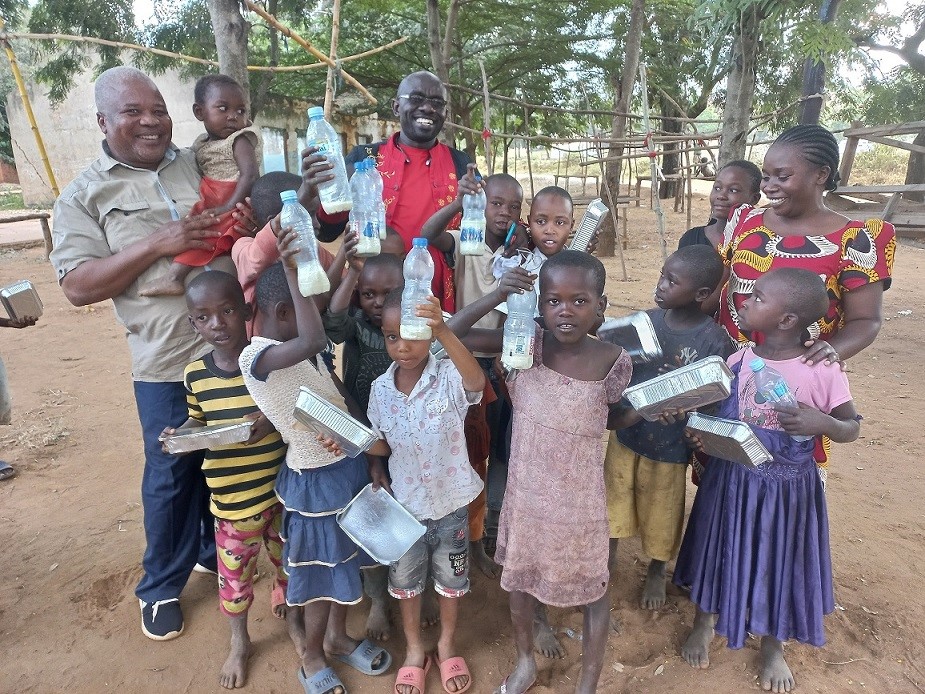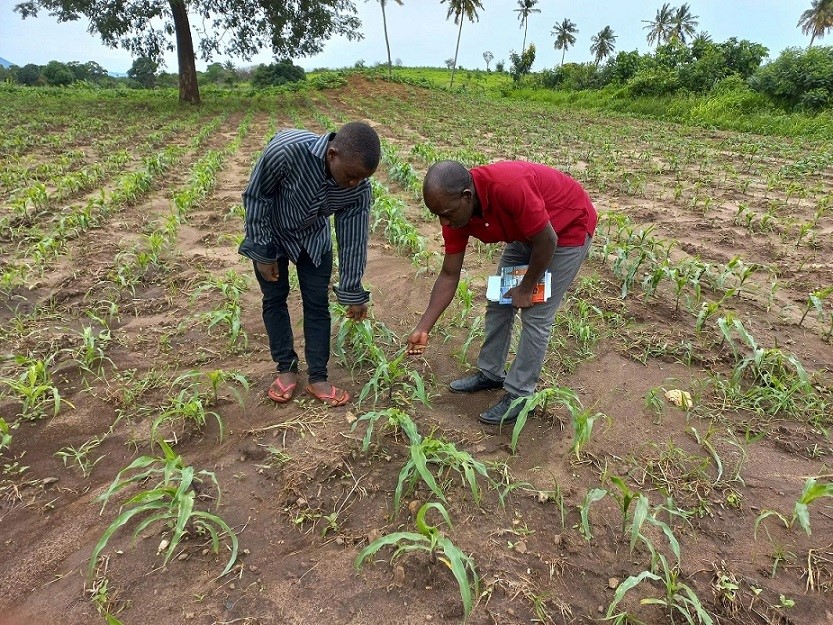




- BRNN
- BRI News
- BRNN News
- Database
Official Documents Polices and Regulations
Inter-government Documents International Cooperation BRI Countries
Business Guide Economic Data BRI Data
Trade
Investment Projects Latest projects
Cases - Content Pool

Villagers and children of Mtegowasimba village, Morogoro region, Tanzania show soybean milk they have made. (Photo courtesy of the College of International Development and Global Agriculture, China Agricultural University)
On a day in late June, some villagers in Makuyu village, Morogoro region of Tanzania, gathered around a cauldron, stirring the boiling soy bean milk in it. The aroma floated in the air, mixed with the smell of the crackling firewood.
Villager Ali was in the crowd, learning how to make soybean milk and other bean products. Many senior villagers and children were holding plastic bottles and cups in their hands, waiting to have a taste of the "Chinese drink."
Ali took a sip and said with a smile, "Today is like a festival."
A maize-corn intercropping program was launched in Makuyu and other three villages last October by China Agricultural University (CAU) and the government of the Morogoro region.
The program, at its initial stage, selected 100 demonstration households to learn intercropping techniques, with a follow-up plan to teach villagers to make soybean products upon harvest.
During a promotional activity of the program held in Makuyu village, Ali, for the first time, learned that soybean can not only enhance nutrient intake but also improve villagers' income.
"It's simple and practical, just like other techniques introduced by Chinese experts before," he said.
Being confident in the program, the man planted around six mu (4,000 square meters) of soybeans. As of the end of February this year, the 100 households had planted a total of 420 mu of soybeans.
The harvest season for soybeans came in June. Seeing bags of harvested soybeans, Ali felt joy and happiness.
"I was worried about the crop because the dry season this year was a little bit longer than usual. It was beyond my expectation that the yield was nearly 500 kilograms," Ali told People's Daily.
With the assistance of Chinese experts, Makuyu village has undergone drastic changes over the past decade, which reinforced the determination of Ali and his fellow villagers to get rid of poverty.
In 2011, an agricultural program aimed at poverty reduction was launched by CAU, the government of the Morogoro region and Tanzania's Sokoine University of Agriculture. It has promoted the compact planting techniques of maize in 10 villages and trained over 1,000 local households and some 40 agricultural technicians.
Tanzanian farmers measure the weight of crops in the unit of "bags." A bag of maize weighs approximately 100 kilograms.
"In the past, we normally harvested seven or eight bags of maize from each acre. After Chinese experts taught us row spacing and the use of organic fertilizers, the yield has been lifted to 10 to 16 bags per acre," Ali said.
The techniques taught by Chinese experts have helped improve the livelihood of Ali's family, who have moved into a big house with eight rooms.
However, rising production means faster consumption of soil fertility. Li Xiaoyun, a docent with CAU in charge of the agricultural program, proposed to plant soybeans to recover and maintain soil fertility after ruminating on the issue.
The Morogoro region is one of the five major soybean production areas in Tanzania. However, the local soybean industry remained gloomy due to the extensive models of local agriculture and a lack of processing techniques for soybean products.
"Planting soybeans is profitable. The crop is able to fix nitrogen and make the soil more fertile. More importantly, as a nutritious crop, soybean is a great supplement to the maze-dominated local dietary habit which causes nutrient deficiency," Li said.
Under the efforts of Li and his team, the maize-corn intercropping program kicked off.
Following the harvest of soybeans, Li and his team started teaching locals to make soybean milk.

An agriculture official of Morogoro region, Tanzania checks soybean growth with a local farmer. (Photo courtesy of the College of International Development and Global Agriculture, China Agricultural University)
Leah John Mwingira, a local agricultural official of Mvomero District Council of the Morogoro region, found that the Chinese drink was very popular among the locals.
"The warm drink is unexpectedly tasty. I like it," said Obama, a 70-year-old villager from Mtegowasimba village. He was among the first to join the soybean program in the village, and has decided to plant another 10 mu of soybeans the next year.
"Soybean planting is not new in my village, but this is the first time for me to know that soybeans can be made into so many products," said Nyambita Magoma, executive officer of Makuyu village.
"The villagers added local spice to the soybean milk, and are planning to make soybean coffee and soybean vegan meat," he said, adding that soybean planting has brought new hopes to the locals.

Tel:86-10-65368972, 86-10-65369967